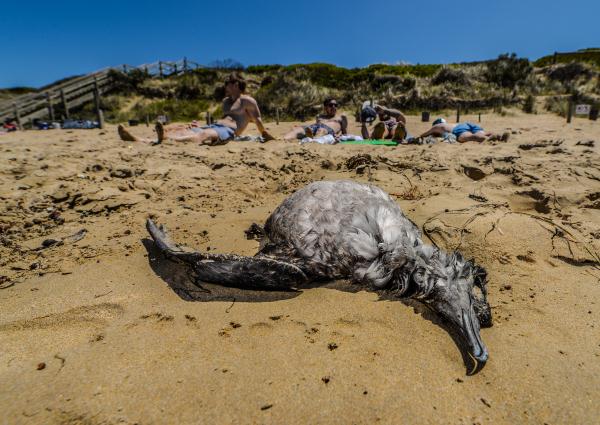By NOEL MURPHY
GEELONG region beaches are littered with thousands of dead muttonbirds while endangered hooded plovers struggle against humans and dogs to breed.
The muttonbirds, or short-tailed shearwaters, have suffered from a food shortfall en route from the northern reaches of the Pacific rim, as dwindling hoodies numbers face further decline due primarily to unleashed dogs.
Both face problems this breeding season: the muttonbirds, a month behind their normal schedule, need to refuel before nesting; the plovers, with perhaps a total two dozen between the Bellarine and Lorne, need protection from human activity.
Naturalist Trevor Pescott told the Independent the muttonbird deaths were “quite extraordinary”.
“It’s certainly the worst in the years I’ve been birdwatching. I’ve never seen so many in distressed condition and dying on the beaches.
“They’re being blown in and getting into all sorts of places they wouldn’t normally be. I had one land in my garden in Newtown.”
Mr Pescott said tidal and wind patterns could have contributed to the muttonbird difficulties and raised the possibility of further problems if changing weather patterns altered ocean surface temperatures in the future.
“We get small numbers washed up about this time each year but this year it’s been quite extraordinary, the numbers have been huge, the birds seem just not able to get enough food.”
Hooded plovers faced problems too as they struggled to maintain numbers that Mr Pescott said had fallen away from dozens to mere handfuls.
“We have a couple of pairs between Point Lonsdale and Ocean Grove, a couple of pairs between Barwon Heads and Torquay, and from Anglesea to Fairhaven.
“We’d be lucky if we’ve got a couple dozen – they’re very scarce.
“The decline is basically because of the way the beaches have been developed and used by people. There’s a direct conflict between people and the birds,” Mr Pescott said.
“They were never in big numbers, just scattered pairs along the coast, but in the 1950s and ’60s it wasn’t uncommon to find 20 to 30 pairs. Now you’re lucky if you find more than a handful.
“I can remember behind 13th Beach I saw 40 or more on one occasion. Their numbers have declined very much.”
Geelong’s City Hall said signage regarding dog on-leash restrictions had been posted on beaches to help give young hoodies a better chance to survive.







